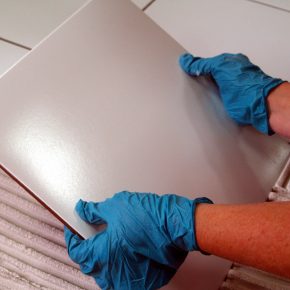
Top of the tiles: Weber advice for bathroom and kitchen fitters
Before tiling kitchens or bathrooms, it’s essential to plan ahead to avoid any problems that could occur. Here, Saint-Gobain Weber looks at how to choose the right products to deliver a high-quality finish for every tiling project.
Tiling uneven floors
It is important, both for appearance and safety, that the finished tile surface is flat with no tiles standing higher than the others. If the substrate isn’t flat, it’s still possible to lay tiles, but it will be more difficult. Extra time may be needed to lay them evenly.
Before laying tiles, any deep holes in the substrate must be filled with webercem pyrapatch repair mortar. Once the big gaps have been evened out, prime the substrate with weber PR360 and allow to dry.
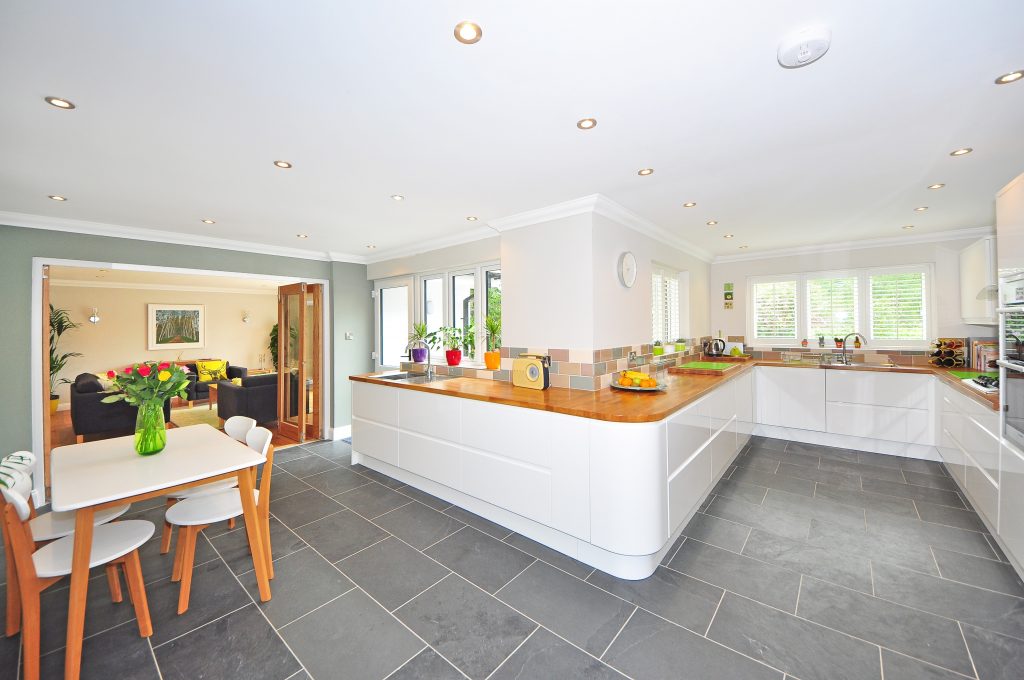
A levelling compound can then be used to smooth out the irregularities, small holes and gaps between the existing tiles. This creates a flat and level surface suitable for tiling onto.
weberfloor flex is a fibre-reinforced self-smoothing levelling compound suitable for most interior floor substrates up to a depth of 50mm. It can be tiled onto after 1 – 2 hours.
Underfloor heating
When tiling on top of electric underfloor heating, the most common problems fitters experience tend to be around tile movement. This is due to thermal expansion and contraction, damage to the heating system wiring from the trowel, or the adhesive becoming weak and crumbly due to the heating system being turned on too soon.
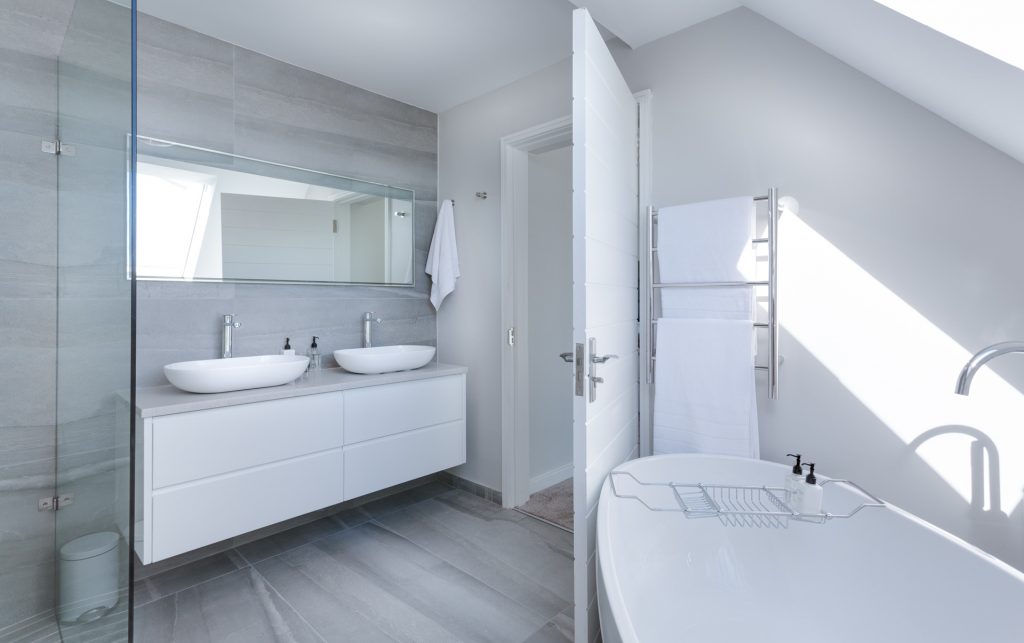
To overcome these problems, make sure that the substrate is rigid, sound, clean and dry. On wooden substrates, ensure it is capable of supporting the expected load without excessive deflection.
For extra rigidity, overlay the existing timber boards with either WBP plywood (minimum 18mm thickness) or tile backer board. Prime the substrate with weber PR360 before installing the underfloor heating system in accordance with the manufacturer’s instructions and test that it works.
weberfloor flex
Apply weberfloor flex self-smoothing compound up to 50mm deep (10mm maximum for wooden substrates) or until the warming elements are covered by at least 3mm. Allow three hours before foot traffic.
When it comes to laying the tiles, fix them into a bed of tile adhesive at least 3mm thick or 5mm thick for wooden substrates. Products like weberset SPF or weberset rapid SPF are extra flexible (S1). Therefore, they are ideal for substrates where some movement or expansion is likely.
weberset rapid SPF allows for light foot traffic and grouting after two hours. For heavy or large tiles, use weberset pro lite – rapid, a lightweight, ultra-flexible (S2) rapid-setting floor tile adhesive that can be grouted after two hours.
weberfloor flex, weberset rapid SPF and weberset pro lite – rapid also have the innovative Low Dust Technology™ formulation which significantly reduces airborne dust created during the pouring and mixing process.
Complete the job with weberjoint premium, a flexible, water-repellent wall and floor tile grout suitable for joint widths from 1 to 20mm. weberjoint premium comes in 18 colours with matching silicones and features PURE CLEAN anti-stain technology.
Advise customers to keep the heating system turned off for at least five days. This is to allow the cement to cure – otherwise, the adhesive, grout or tiles could end up cracking or delaminating.
Protecting a water-sensitive substrate
Tiles are often specified for areas that will be subjected to high humidity or become wet. While the tiles themselves are unaffected by water, it is difficult to ensure a complete seal at the grout joints.
Cement-based grouts are not completely water resistant. While unaffected by water once set, cement-based grouts are porous and will therefore allow water to seep through. They are also vulnerable to erosion as well as normal wear and tear from traffic and cleaning.
Water-sensitive substrates such as plywood, plaster and plasterboard will lose nearly all their cohesive strength if they get wet for any extended period.
The tiling layer should not be considered a waterproofing layer. But the substrates can be protected by applying webersys protect, a ready-mixed surface waterproofing layer known as a tanking system. The most likely places for leaks are in internal corners and around pipes, plugholes, trim etc, so these areas must be treated with care.
Weber products are UK manufactured helping to ensure product quality, uniformity and availability with reduced transportation costs and CO₂ emissions.
For more information about all of Saint-Gobain Weber’s tile fixing products, visit www.uk.weber
Saint-Gobain Weber
Dickens House, Enterprise Way
Maulden Road
Flitwick
Bedford
MK45 5BY
UK
Visit Saint-Gobain Weber's website
Visit Supplier's page
Latest news
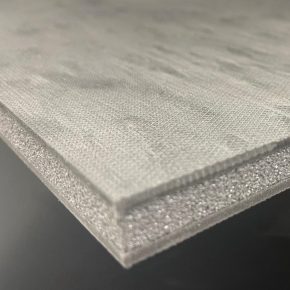
29th April 2024
Hush: New Hushlay options offer acoustic upgrade potential
Leading UK acoustic systems manufacturer Hush Acoustics has introduced two additional variants of its Hushlay Soundmatting product.
Posted in Acoustics, Noise & Vibration Control, Articles, Building Industry News, Building Products & Structures, Building Services, Facility Management & Building Services, Floors, Innovations & New Products, Insulation, Restoration & Refurbishment, Retrofit & Renovation
29th April 2024
Digital Construction Week 2024 speaker programme announced
The programme at Digital Construction Week is carefully designed to help you keep up with the fast pace of innovation in the built environment.
Posted in Articles, Building Industry Events, Building Industry News, Building Products & Structures, Building Services, Exhibitions and Conferences, Innovations & New Products, news, Posts, Restoration & Refurbishment, Retrofit & Renovation, Seminars, Sustainability & Energy Efficiency
29th April 2024
Steel Window Association - for the specialists in domestic and commercial refurbishment of steel windows
The UK-wide Steel Window Association members are the established, proven experts in the renovation and sympathetic refurbishment of steel windows and doors in both domestic and commercial premises.
Posted in Architectural Ironmongery, Articles, Building Associations & Institutes, Building Industry News, Building Products & Structures, Building Systems, Doors, Glass, Glazing, Restoration & Refurbishment, Retrofit & Renovation, Steel and Structural Frames, Windows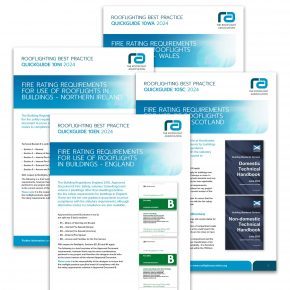
29th April 2024
The Rooflight Association: Rooflights & Fire Regulations - what you need to know
The Rooflight Association has published a series of ‘Quickguides’, covering the fire rating requirements for use of rooflights in buildings for each of the four devolved UK nations.
Posted in Articles, Building Associations & Institutes, Building Industry News, Building Products & Structures, Building Regulations & Accreditations, Building Services, Ceilings, Health & Safety, Innovations & New Products, Lighting, Publications, Restoration & Refurbishment, Retrofit & Renovation, Roofs, Security and Fire Protection, Walls, Windows
 Sign up:
Sign up: